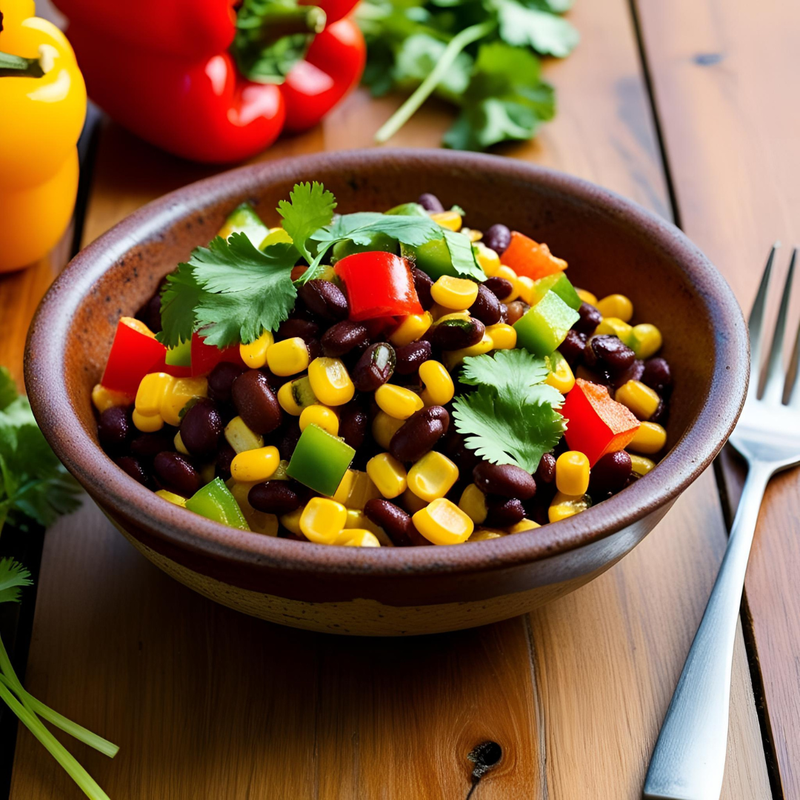Feeling Sluggish? Your Gut Might Be Calling for Fiber (And How to Answer Easily!)#
Let's talk about something vital for feeling your best: fiber. We hear about it all the time, right? But sometimes, life gets busy, and ensuring we get enough falls by the wayside. Maybe you're feeling a bit 'stuck' digestively, or perhaps your doctor suggested upping your intake. Whatever the reason, you're likely wondering how to easily increase fiber when your body needs it. The good news? It's much simpler than you might think. Forget drastic diets or complicated meal plans; we're focusing on straightforward, sustainable ways to boost your fiber intake naturally.¶
This guide is all about practical, easy ways to add fiber to your daily routine without causing discomfort or making you overhaul your entire kitchen. We'll cover why it matters, how to tell if you need more, and most importantly, simple steps you can take starting today.¶
First Off, Why is Fiber Such a Big Deal Anyway?#
Before we dive into the 'how,' let's quickly touch on the 'why'. Fiber isn't just about preventing constipation (though it's great for that!). This powerhouse nutrient, found mainly in fruits, vegetables, whole grains, and legumes, plays a massive role in our overall health.¶
Key Benefits of Getting Enough Fiber:#
- Digestive Harmony: Fiber adds bulk and softness to stool, promoting regularity and preventing issues like constipation and hemorrhoids. Think of it as a gentle internal 'sweep'.
- Heart Health Hero: Certain types of fiber (soluble fiber) can help lower LDL ('bad') cholesterol levels, contributing to better heart health.
- Blood Sugar Balance: Fiber slows down the absorption of sugar into your bloodstream, helping to maintain more stable blood sugar levels – crucial for energy and preventing spikes and crashes.
- Weight Management Ally: High-fiber foods tend to be more filling, helping you feel satisfied for longer. This can naturally help manage appetite and support weight management goals.
- Gut Microbiome Food: Fiber acts as fuel (prebiotics) for the beneficial bacteria living in your gut, supporting a healthy gut environment which is linked to numerous aspects of health.
Listening to Your Body: Signs You Might Need to Increase Fiber Intake#
Our bodies often send subtle (and sometimes not-so-subtle) signals when they're not getting enough of something. If you're wondering if boosting fiber is right for you, look out for these common indicators:¶
- Constipation: This is the most classic sign. If you're having infrequent bowel movements (less than three times a week) or they are difficult to pass, low fiber could be a culprit.
- Feeling Hungry Soon After Eating: Fiber helps promote satiety. If you find yourself reaching for snacks shortly after a meal, your meal might have been low in fiber (and potentially protein/healthy fats).
- Blood Sugar Swings: Experiencing energy crashes or feeling shaky between meals could sometimes be linked to meals lacking fiber to slow sugar absorption.
- You Rarely Eat Whole Grains, Fruits, or Veggies: Be honest with yourself. If your diet mainly consists of refined grains (white bread, pasta), processed foods, and minimal produce, you're likely falling short on fiber.
Disclaimer: While these can be signs of low fiber intake, they can also indicate other health issues. If you have persistent digestive problems or concerns, it's always best to chat with your doctor or a registered dietitian.¶
The Core Mission: How to Easily Increase Fiber Without the Fuss#
Alright, let's get to the heart of it. You need more fiber, but you want simple fiber strategies, not a complete lifestyle upheaval. Perfect! Here’s how to make getting more fiber feel effortless:¶
1. The Golden Rule: Start Small and Go Slow!#
This is the single most important piece of advice. If you suddenly jump from a low-fiber diet to a super high-fiber one, you're likely to experience gas, bloating, and discomfort. Your digestive system needs time to adjust. Think marathon, not sprint when you increase fiber intake.¶
Aim to add just one high-fiber food or make one simple swap per day or every few days. Listen to your body and increase gradually as you feel comfortable. Patience is key!
2. Supercharge Your Breakfast#
Breakfast is prime real estate for boosting fiber easily. Many common breakfast foods can be swapped or enhanced:¶
- Oatmeal Power: Choose rolled or steel-cut oats over instant packets (which often have added sugar and less fiber). Top with berries, chia seeds, or flax seeds for an extra fiber kick.
- Cereal Smarts: Look for cereals with at least 5 grams of fiber per serving. Check the first ingredient – it should be a whole grain (like whole wheat, oats, or bran).
- Smoothie Boost: Add a tablespoon of chia seeds, flax seeds, psyllium husk (start with a small amount!), or a handful of spinach or kale to your regular smoothie. You likely won't even taste them!
- Toast Upgrade: Switch from white bread to 100% whole-wheat or whole-grain bread. Top with avocado and a sprinkle of seeds instead of just butter or jam.
3. Simple Swaps for Lunch & Dinner#
Making small changes to your main meals is another fantastic way to increase fiber intake without feeling deprived:¶
- Grain Goodness: Swap white rice for brown rice, quinoa, farro, or barley. Choose whole-wheat pasta instead of regular white pasta.
- Love Your Legumes: Add beans (kidney, black, chickpeas), lentils, or peas to soups, salads, stews, or pasta sauces. Start with small amounts (like 1/4 cup) if you're not used to them.
- Veg Out: Aim to fill half your plate with non-starchy vegetables. Add extra veggies to casseroles, stir-fries, and sauces. Sneak shredded carrots or zucchini into meatloaf or pasta sauce.
- Potato Power (with Skin!): Eat potatoes (white or sweet) with their skin on – that’s where a lot of the fiber resides! Baked or roasted is better than fried.

4. Snack Smarter, Not Harder#
Snack time is a golden opportunity for getting more fiber. Ditch the low-fiber chips and crackers for these options:¶
- Fruit First: Apples (with skin), pears (with skin), berries (raspberries are fiber champs!), oranges, and bananas are all great choices.
- Veggies & Dip: Baby carrots, celery sticks, bell pepper strips, or cucumber slices with hummus (made from chickpeas – another fiber source!).
- Nuts & Seeds: A small handful of almonds, walnuts, chia seeds, pumpkin seeds, or sunflower seeds provides fiber and healthy fats. (Portion control is key here due to calories).
- Air-Popped Popcorn: A whole-grain snack that's surprisingly high in fiber. Go easy on the butter and salt.
Quick Fiber Wins: Snack Edition#
| Snack Idea | Approx. Fiber (per serving) | Easy Tip |
|---|---|---|
| 1 Medium Apple (with skin) | ~4-5g | Keep the skin on! |
| 1/2 cup Raspberries | ~4g | Add to yogurt or eat plain. |
| 1/4 cup Almonds | ~3-4g | Great for on-the-go. |
| 2 Tbsp Hummus w/ Veggies | ~2-3g + veggie fiber | Choose colorful veggies. |
| 3 cups Air-Popped Popcorn | ~3-4g | Easy whole-grain snack. |
5. Hydration is Non-Negotiable!#
As you increase fiber intake, you absolutely must increase your water intake too. Fiber works by absorbing water in your digestive tract. Without enough water, fiber can actually worsen constipation and discomfort.¶
Think of it like this: fiber is the sponge, water is needed to make the sponge work properly. Aim for at least 8 glasses (64 oz) of water per day, potentially more as you add more fiber.
6. Become a Label Detective#
Get comfortable reading the Nutrition Facts panel on packaged foods. Look for the 'Dietary Fiber' line. Compare brands – you might be surprised how much fiber content can vary even in similar products like bread or crackers. Aim for products with at least 3 grams of fiber per serving, ideally 5 grams or more.¶
7. Considering Fiber Supplements? (Proceed with Caution)#
While supplements like psyllium husk, methylcellulose, or inulin can help boost dietary fiber, it's generally best to get fiber from whole foods first. Foods offer a package deal of vitamins, minerals, and antioxidants alongside fiber. If you do consider a supplement, talk to your doctor first, start with a very small dose, and drink plenty of water. Don't rely on them as your primary source.¶
Uh Oh... Navigating Potential Speed Bumps (Like Gas and Bloating)#
It's common to experience some extra gas or mild bloating when you first start adding fiber, especially if your previous intake was very low. This is usually temporary as your gut bacteria adjust. Here’s how to minimize discomfort:¶
- Reiterate the Golden Rule: Go SLOW. Don't add multiple high-fiber foods all at once.
- Hydrate, Hydrate, Hydrate: Seriously, drink that water!
- Spread Fiber Throughout the Day: Instead of one giant fiber-heavy meal, incorporate smaller amounts at each meal and snack.
- Consider Soluble Fiber First: Foods rich in soluble fiber (oats, beans, apples, citrus fruits, carrots, psyllium) tend to be a bit gentler on the stomach initially for some people compared to large amounts of insoluble fiber (wheat bran, whole grains, vegetable skins).
- Be Patient: Give your body a week or two to adapt to each small increase.
Wrapping It Up: Your Easy Fiber Journey Starts Now!#
See? Figuring out how to easily increase fiber when your body needs it doesn't have to be complicated or overwhelming. By focusing on small, gradual changes, simple swaps, smart snacking, and staying hydrated, you can significantly boost your fiber intake and reap the amazing health benefits.¶
Remember to listen to your body, be patient with the process, and celebrate the small wins. Adding more fiber is an investment in your digestive health, heart health, and overall well-being. You've got this!¶
What are your favorite easy ways to add fiber to your meals? Share your tips in the comments below – let's learn from each other! For more health and wellness insights, feel free to explore more on our website.¶














